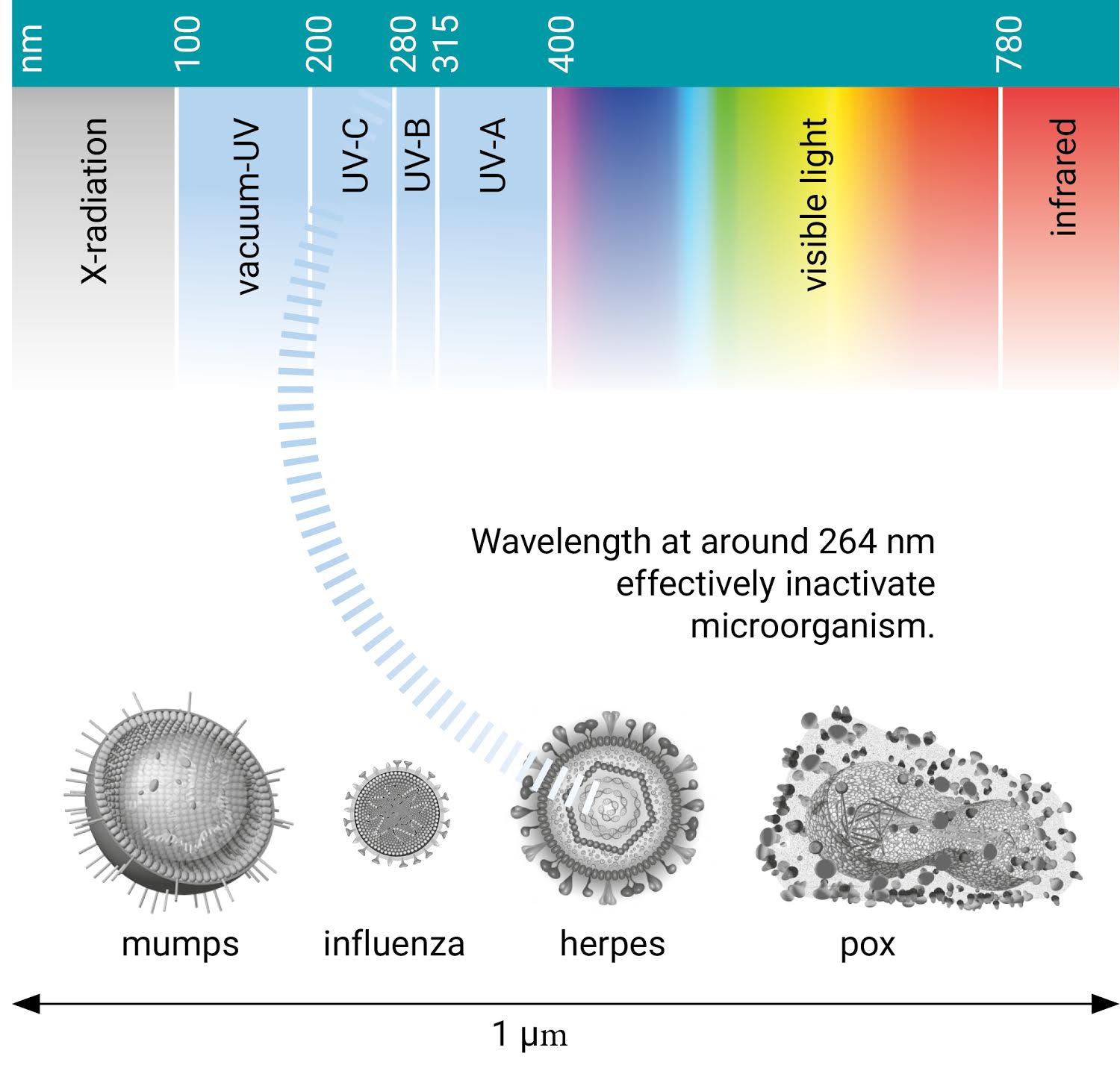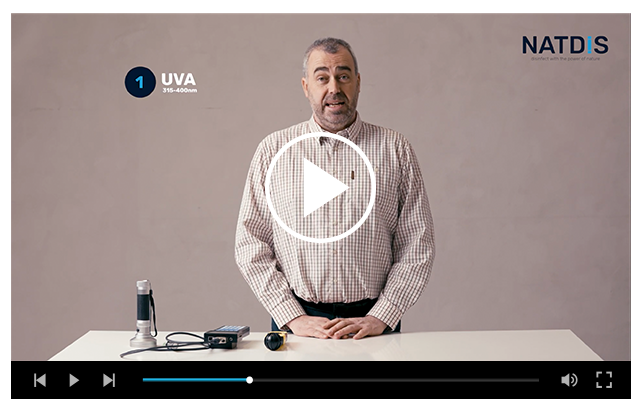UV is shortwave light and is defined as the light between 100 and 400 nm. Nm is the scale you use to describe the different wavelengths of light, and it refers to the wavelength in nanometres. 1 nm is 1 x10-9 m.
The light below 400 nm is not visible to humans, and therefore UVC light cannot be seen. The light you see from a UVC source (lamp / LED) is a residual product that is above 400 nm.
Categories of UV:
- UVA is light from 320-400 nm
- UVB is light from 280-320 nm
- UVC is light from 200-280 nm
- VUV is light from 100-200 nm

One of the effects you experience when you move from 400 nm to 100 nm is that the shorter the wavelength, the faster the light is stopped by the molecules in the air, such as oxygen nitrogen etc.
This means that when the sun emits all these different wavelengths, it is actually only UVA and UVB that pass through the ozone layer and the atmosphere, reaching down to the surface of the earth. It is estimated that 90% of UVA and 5% of UVB reach the surface and that no UVC or VUV reaches the surface.
UV for disinfection
When we work with UV light for disinfection, there are several factors to be aware of. From 300 nm, you experience that UV light is harmful to cells, which is why you can get eye damage and sunburn from UVB light. But it is when we get down to UVC below 280 nm that we have the powerful effect on various pathogens (bacteria, viruses, yeasts and moulds). UVC light from 220 nm to 280 nm is referred to as “Germical light”.
When working with UVC, it is important to be aware that UVC light loses its energy relatively quickly once it leave the lamp and goes into the room. Due to its wavelength, the light is also unable to move very far into cells, and in water, there will not be much UVC light left after a short distance.
At 220 nm and lower, the emitted light will be stopped very quickly by the molecules of the air. This makes it a lot harder to work with when we want to eliminate pathogens. Therefore, the very low wavelengths are often only used in closed systems.
The UVC types
Today, a distinction is made between two main types of UVC, the traditional UVC technology that works with light around 260 nm and FAR UVC at 222 nm, which is a relatively new technology. This technology is being studied as an alternative or complementary option for the use of UVC.
It is important to distinguish between the two techniques, as they act differently on bacteria, viruses and fungi and cannot, therefore, be directly compared. Both are a part of the UVC spectrum and are subject to the same requirements, rules and use laws.

